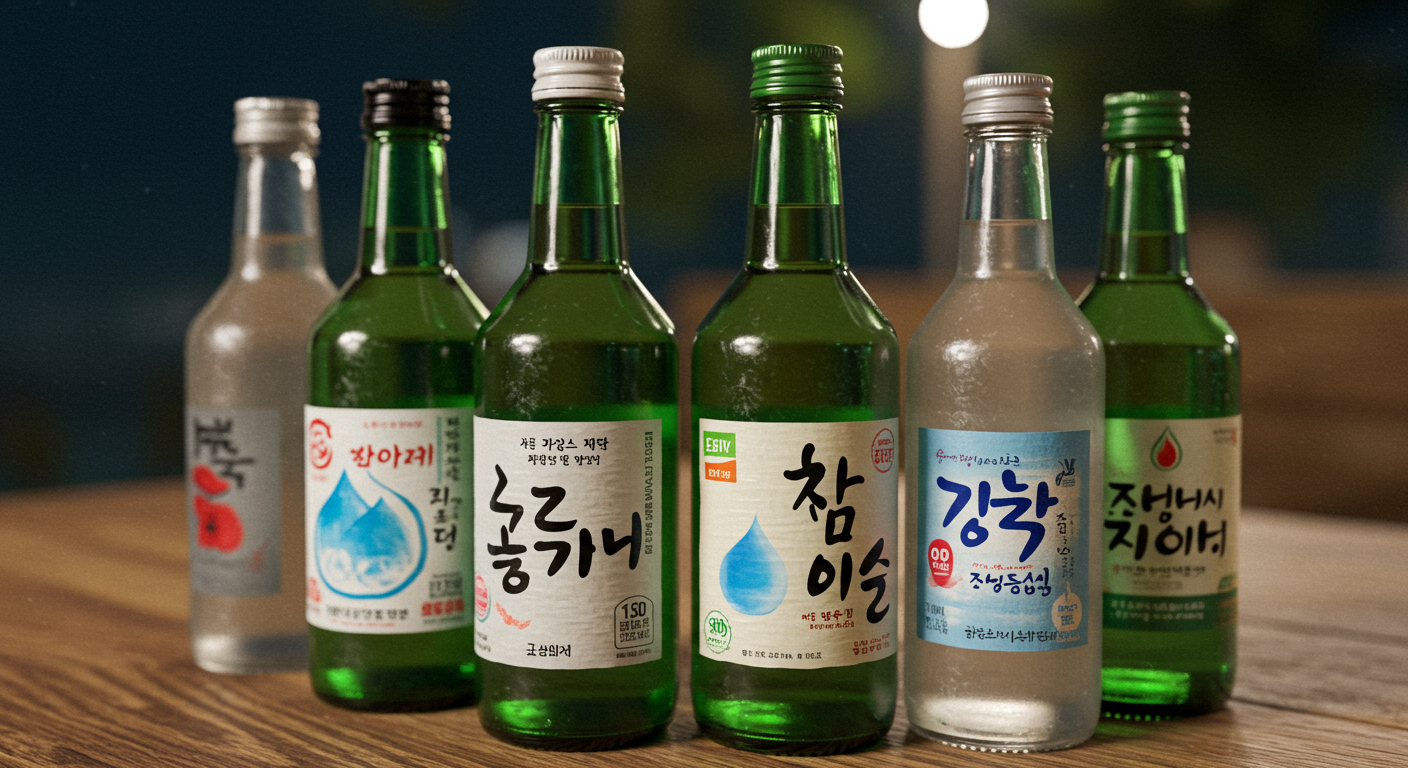Now Reading: Soju: A Comprehensive Guide to Korea’s National Drink
- 01
Soju: A Comprehensive Guide to Korea’s National Drink
Soju: A Comprehensive Guide to Korea’s National Drink

What is Soju?
Soju is a clear, colorless Korean distilled beverage. It’s often referred to as ‘Korea’s national drink’ due to its immense popularity and cultural significance. Unlike sake (which is brewed), soju is distilled, resulting in a higher alcohol content, typically ranging from 16% to 45% ABV.
Traditionally made from rice, modern soju often uses other starches like tapioca, sweet potatoes, or barley. This change was largely due to rice shortages in the mid-20th century. Despite the varied ingredients, soju maintains its signature clean and crisp taste.
Soju plays a vital role in Korean social life. It’s a common sight at meals, celebrations, and even business gatherings. Sharing soju is a way to bond and build relationships in Korean culture.
A Brief History of Soju
The origins of soju can be traced back to the 13th century during the Goryeo Dynasty. It’s believed that the distilling techniques were introduced to Korea by the Mongols, who had acquired them from Persia.
Initially, soju was a premium drink enjoyed by the upper classes. The main ingredient was rice, which was precious and costly. Over time, as distilling technology improved and alternative ingredients were used, soju became more accessible to the general population.
During the Korean War and subsequent economic hardships, rice became scarce, leading to restrictions on its use in soju production. This prompted the use of sweet potatoes and other starches, contributing to the diversity of soju available today. The government has since relaxed these rules.
How Soju is Made: From Grain to Glass
The process of making soju generally involves the following steps:
- Fermentation: Starch (rice, tapioca, sweet potato, etc.) is fermented with yeast and water to create a mash.
- Distillation: The fermented mash is then distilled to separate the alcohol from the other components.
- Filtration: The distilled alcohol is filtered to remove impurities and achieve a clear, clean taste.
- Dilution: The alcohol content is adjusted to the desired level (typically between 16% and 45%) by adding water.
- Bottling: Finally, the soju is bottled and ready for consumption.
Traditional soju production methods, which often involve using pot stills, are still practiced by some smaller distilleries. These methods tend to produce soju with a more complex and nuanced flavor profile. Mass-produced soju typically uses continuous distillation, which is more efficient but can result in a less distinctive taste.
No products found.
Varieties of Soju: From Classic to Flavored
Classic Soju: This is the most common type, characterized by its neutral taste and relatively low price. Popular brands include Jinro, Chum Churum, and Good Day.
Premium Soju: Made with higher-quality ingredients and often using traditional distillation methods, premium soju offers a more refined and complex flavor. Examples include Hwayo and Andong Soju.
Flavored Soju: In recent years, flavored soju has become increasingly popular, especially among younger drinkers. These sojus come in a variety of flavors, such as grapefruit, lemon, peach, apple, and blueberry. They offer a sweeter and more accessible alternative to traditional soju.
Takju Soju: This is a milky rice wine, unfiltered and with a cloudy appearance. It is sweet and has a lower alcohol content.
How to Drink Soju Like a Korean
Drinking soju in Korea is often a social ritual with its own set of etiquette:
- Pouring: When pouring soju for someone, use both hands to hold the bottle as a sign of respect.
- Receiving: When someone pours you soju, hold your glass with both hands.
- Toasting: It’s customary to offer a toast (geonbae) before taking a sip.
- Drinking: Turn your head slightly away from elders or superiors when taking a drink as a sign of respect.
- Sharing: Always offer to pour soju for others before pouring for yourself.
Soju is often enjoyed with food, particularly Korean BBQ. It’s also commonly used in cocktails. Popular soju cocktails include Soju & Tonic, Soju Mojito, and Yogurt Soju.
Important Note: Drink responsibly! Soju can have a higher alcohol content than you might expect. Know your limits and drink in moderation. It is also considered disrespectful to refuse a drink that is offered to you.
No products found.












